DIY: Pruning an apple tree –– the basics
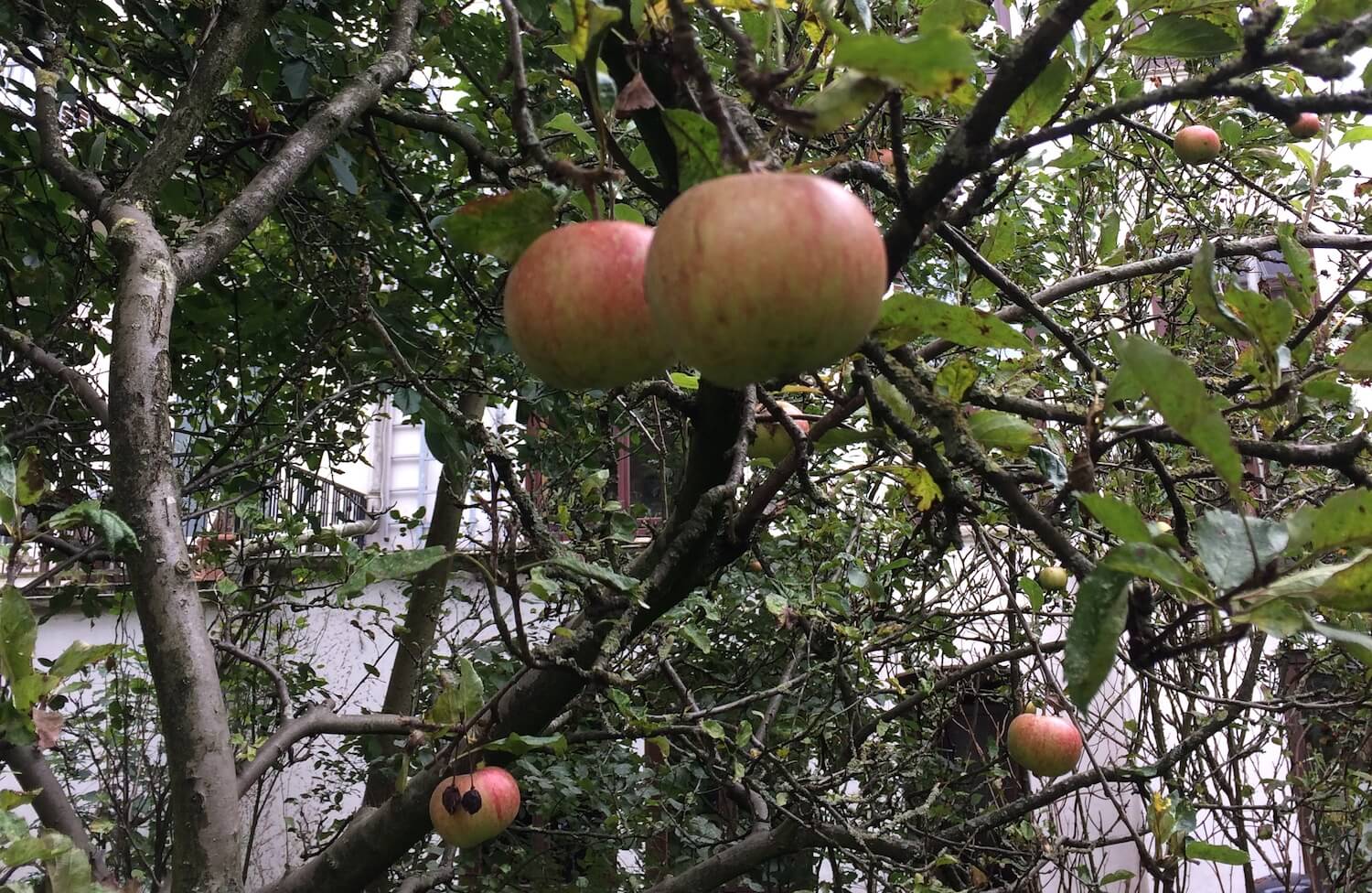
Pruning is essential for the growth, productivity and health of your fruit tree. This year, I decided to teach myself the basics of pruning in order to get Humboldt Garden’s aged apple tree back in shape. I did some research and now share with you the most important points you need to keep in mind when pruning your apple trees.
1. When do I prune an apple tree?
Gardeners in the Northern hemisphere can prune their fruit trees such as apple or pear trees during winter, summer or in both seasons.
You need to carefully observe the needs of your tree.
In my case, the apple tree had not been cared for in more than a year. I recognized in fall that crops were poor; some of the apples were tiny and never matured into a ripe fruit. Since no one pruned the tree in summer, it was time to take action this winter.
Pomaceous fruit trees such as apple trees can be pruned as early as January (Baum- u. Rebschule Schreiber 2021) through March. Usually there is no frost damage for temperatures up to -5°C (Plantura Magazin 2021). The advantage of winter pruning is that without the leaves with you get a better idea of the structure of your tree and you can more easily determine the main branches.
2. Which tools do I need to prune the tree?
You need three basic tools for pruning your fruit tree.
- small (bypass) pruning shears for water shoots and small branches (up to 1.5 cm)
- bypass loppers for medium branches
- pruning saw for larger branches
Make sure to sanitize your tools before starting to cut in order to avoid potential fungi, bacteria or pests from previous clippings harming your tree. Tools should be sharp to make clean cuts. When pruning with bypass tools, the cutting edge should always face towards the tree for a clean cut. You can also rework unclean cuts with a pruning knife (gardify 2020).
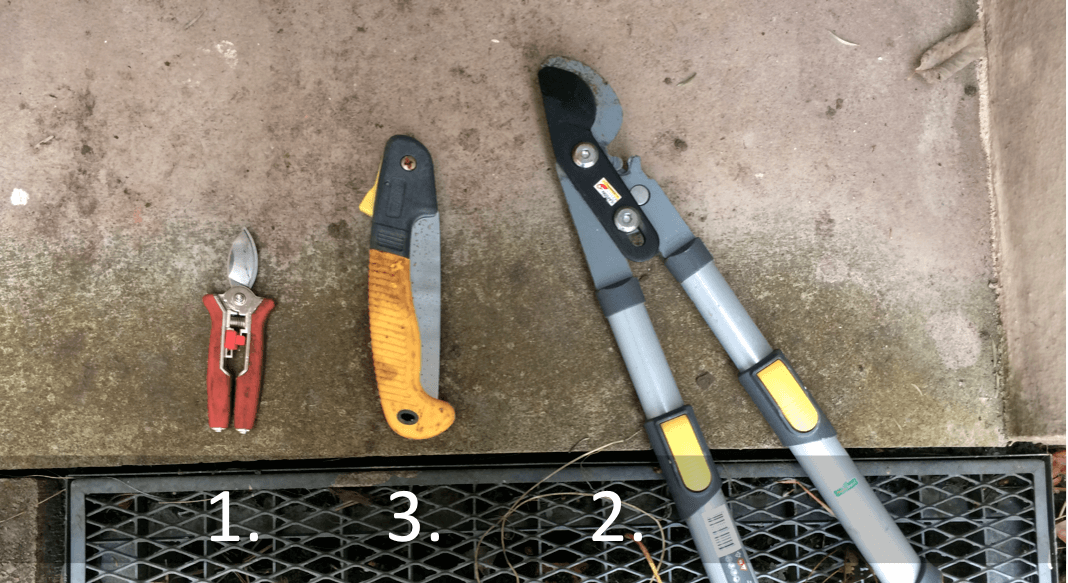
3. Which branches do I prune?
- watershoots / water sprouts: Watershoots are “vigorous, tall, upright and leafy branches, producing no flowers or fruit.” (RHS 2021) They are easily determined by their lighter color and vertical growth.
- sick or dead branches
- crossing or overlapping branches
- branches that grow towards the trunk or center of the canopy
Always cut the branches right outside the collar and do not leave stumps (RHS 2018). When cutting, make sure there is a redirection towards another outward-facing, fertile and healthy branch.
On your final observation check whether the main branches of the tree have enough space in between them for air circulation and sunlight to reach the ripening fruits.
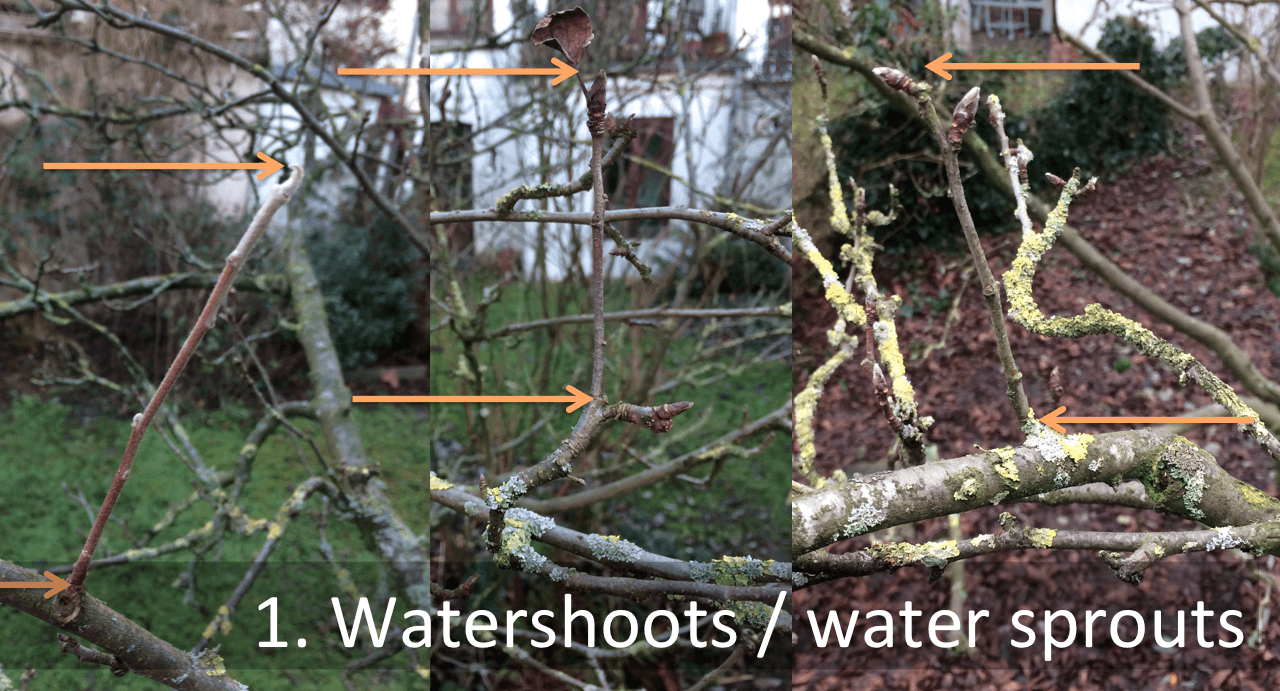
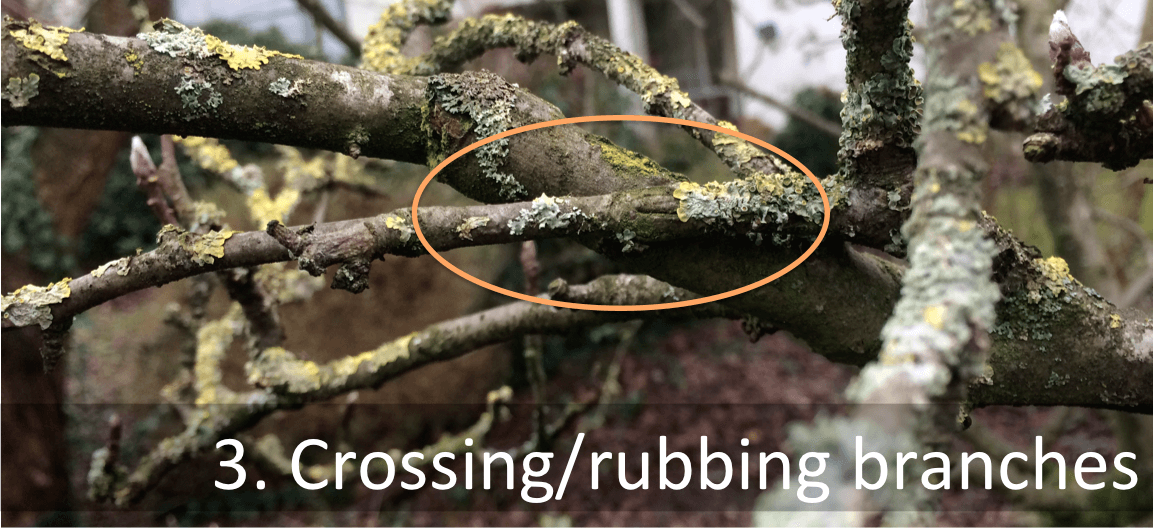
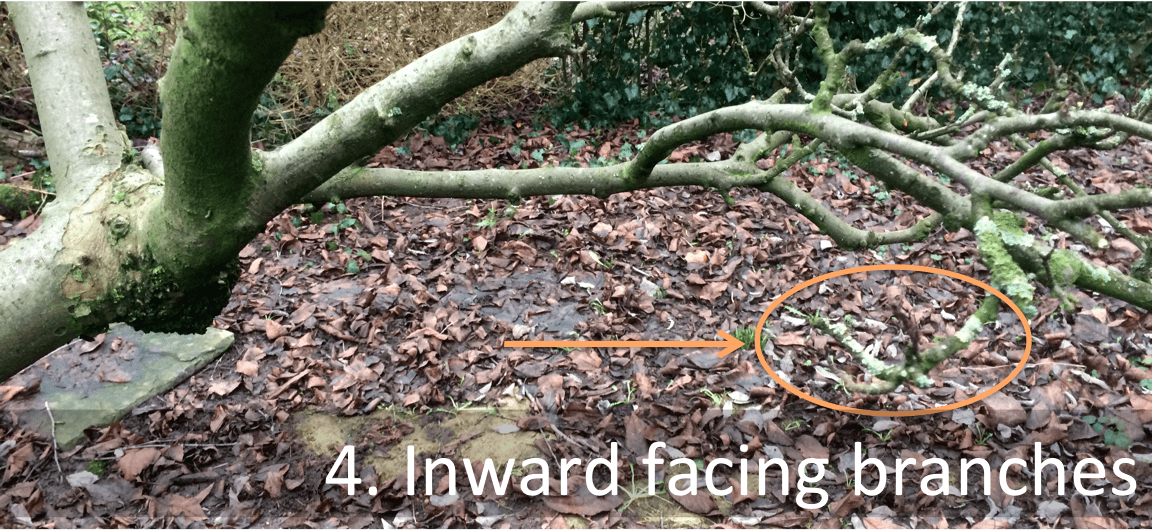
4. General lessons
The more branches you prune the more you encourage your tree to grow. Pruning is not a method to keep your tree small! Beware of over-pruning as it may lead to the growth of more water shoots that will again require more thinning in the next season. You should not cut off more than 25% of the canopy in a year (RHS 2021).
Usually the tree’s growth competes with its productivity. If you prune wisely, redirecting towards fertile branches and boosting yield, you’ll prevent over-vigorous growth (Baum- u. Rebschule Schreiber 2021).
Keep observing the growth and development of your tree after pruning.
If you want to learn more about Humboldt Garden’s history and how I got into gardening and permaculture check out my previous blog post here.
Tina